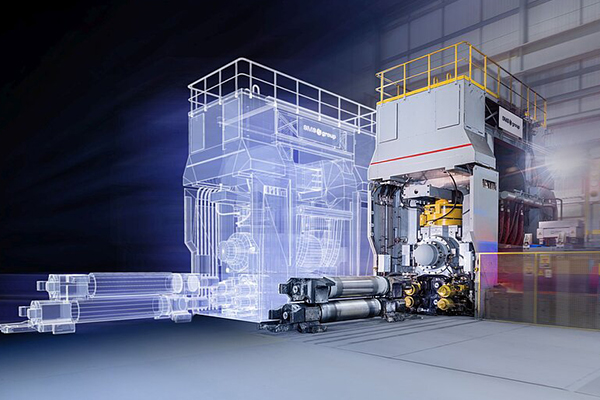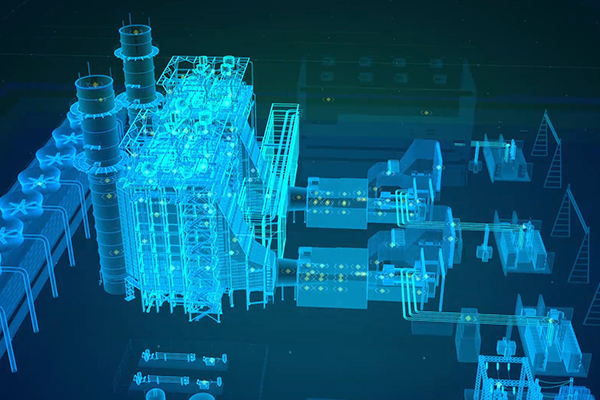To actively cope with climate change, ISMR can provide cutting-edge services related to advanced small modular reactors, nuclear hydrogen, and digital twin technology. ISMR will extend the organizational learning capabilities and alter the basis of competition.
ISMR wants to be competence-enhancing, building on existing know-how and reinforcing incumbents’ positions.
Small Modular Reactors (SMRs)
ISMR is well equipped with advanced technology and global networks to deliver design and engineering services to our customers of SMR stakeholders.

SMR Technology Roadmap
Small modular reactors (SMRs) are advanced nuclear reactors that have a power capacity of up to 300 MWe per unit, which is about one-third of the generating capacity of traditional nuclear power reactors. SMRs, which can produce a large amount of low-carbon electricity, are:
- Small: physically a fraction of the size of a conventional nuclear power reactor.
- Modular: making it possible for systems and components to be factory-assembled and transported as a unit to a location for installation.
- Reactors: harnessing nuclear fission to generate heat to produce energy.
The World Nuclear Association (WNA) lists the unique features which include:
- Small power and compact architecture and usually (at least for nuclear steam supply system and associated safety systems) employment of passive concepts. Therefore there is less reliance on active safety systems and additional pumps, as well as AC power for accident mitigation.
- The compact architecture enables modularity of fabrication (in-factory), which can also facilitate the implementation of higher quality standards.
- Lower power leading to reduction of the source term as well as smaller radioactive inventory in a reactor (smaller reactors).
- Potential for sub-grade (underground or underwater) location of the reactor unit providing more protection from natural (e.g. seismic or tsunami according to the location) or man-made (e.g. aircraft impact) hazards.
- The modular design and small size lends itself to having multiple units on the same site.
- Lower requirement for access to cooling water – therefore suitable for remote regions and for specific applications such as mining or desalination.
- Ability to remove reactor module or in-situ decommissioning at the end of the lifetime.

SMR Schematic Diagram

Applicability of SMRs
Nuclear Hydrogen

Source: DOE
ISMR is building the hydrogen economy as a link to the hydrogen ecosystem.
Nuclear power already produces electricity as a major energy carrier with well-known applications. Operating at very high capacity factors, nuclear energy is well placed to produce zero-carbon hydrogen as an emerging energy carrier with a wide range of applications. The evolution of nuclear energy's role in hydrogen production is seen to be:
- Cold electrolysis of water, using off-peak capacity (needs 50-55 kWh/kg).
- Low-temperature steam electrolysis, using heat and electricity from nuclear reactors.
- High-temperature steam electrolysis, using heat and electricity from nuclear reactors.
- High-temperature thermochemical production using nuclear heat.
- Use of nuclear heat to assist steam reforming of natural gas (methane).
Digital twin


ISMR can provide a virtual environment where process control and operational solutions are designed and tested before being applied to the live plant.
A digital twin is a software-based virtual replica of the complete physical assets of a production facility, including its process equipment, instrumentation, and controls, as well as the production processes. Through this replica, the operation of these assets is modeled and simulated through their lifecycles.
아이에스엠알㈜는 기후변화에 적극적으로 대처하기 위해 첨단 소형모듈원자로, 원자력 수소, 디지털트윈 기술과 관련된 최첨단 서비스를 제공할 수 있습니다. 아이에스엠알㈜는 조직 학습 역량을 확장하고 경쟁의 기반을 바꿀 것입니다.
아이에스엠알㈜는 경쟁력 제고, 기존 노하우 축적 및 재직자의 입장을 강화하고자 합니다.
소형모듈원자로(SMR)
아이에스엠알㈜는 고객이나 SMR 이해관계자에게 설계 및 엔지니어링 서비스를 제공하기 위해 첨단 기술과 글로벌 네트워크를 갖추고 있습니다.

SMR 기술 로드맵
소형모듈원자로(SMR)는 1기당 최대 300MWe의 전력 용량을 가진 첨단 원자로로, 이는 기존 원자로 발전 용량의 약 1/3입니다. 대량의 무탄소 전기를 생산할 수 있는 SMR의 특징은 다음과 같습니다.
- 소형: 기존 원자력 발전소의 크기의 극히 일부에 불과함.
- 모듈식: 시스템과 부품을 공장에서 조립하여 하나의 단위로 설치 장소로 운반할 수 있음.
- 원자로: 핵분열을 이용해 열을 발생시켜 에너지를 생산함.
세계원자력협회(WNA)는 그 고유한 특징을 다음과 같이 설명합니다.
- 소용량과 컴팩트한 구조, 그리고 보통 (적어도 NSSS와 관련 안전시스템의 경우) 피동적 개념을 채택합니다. 따라서 능동적 안전 시스템과 추가 펌프, 사고 완화를 위한 AC 전원에 대한 의존도가 낮습니다.
- 컴팩트한 구조로 모듈화된 제작(공장 내)이 가능하여 더 높은 품질 표준을 구현하는 것도 용이해집니다.
- 용량이 작아지면 방사선원의 양이 줄어들고 원자로(소형 원자로)의 방사능 재고도 줄어듭니다.
- 원자로를 지하 또는 수중에 위치시켜 자연적 위험(예: 위치에 따라 지진이나 쓰나미)이나 인위적 위험(예: 항공기 충돌)으로부터 더 많은 보호를 제공할 수 있습니다.
- 모듈형 설계와 소형인 덕분에 동일 부지에 다수 호기를 설치하기에 적합합니다.
- 냉각수 접근성 요구 사항이 낮아 원격 지역과 광산이나 담수화와 같은 특정 응용 분야에 적합합니다.
- 수명 종료 시 원자로 모듈을 제거하거나 현장 해체가 용이합니다.

SMR 개략도

SMR의 적용성
원자력 수소

Source: DOE
아이에스엠알㈜는 수소 생태계와의 연결고리로서 수소 경제를 구축하고 있습니다.
원자력은 이미 잘 알려진 응용 분야를 가진 주요 에너지 운반체로서 전기를 생산합니다. 매우 높은 용량 계수로 운전되는 원자력은 광범위한 응용 분야를 가진 신흥 에너지 운반체로서 탄소 제로 수소를 생산할 수 있습니다. 수소 생산에서 원자력의 역할은 다음과 같이 진화되었습니다.
- 비수요 시간대 전력을 이용한 물의 저온수전해(50~55 kWh/kg 소요)
- 원자로에서 발생하는 열과 전기를 사용하는 저온 증기 전기분해
- 원자로에서 발생하는 열과 전기를 사용하는 고온 증기 전기분해
- 원자력 열을 이용한 고온 열화학 생산
- 원자력 열을 이용한 천연가스(메탄)의 증기개질
디지털트윈


아이에스엠알㈜는 실제 플랜트에 적용하기 전에 프로세스 제어 및 운영 솔루션을 설계하고 테스트할 수 있는 가상 환경을 제공할 수 있습니다.
디지털트윈은 공정 장비, 계측 및 제어 장치 및 생산 공정을 포함한 생산 시설의 전체 물리적 자산의 소프트웨어 기반 가상 복제본입니다. 이 복제본을 통해 이러한 자산의 작동은 전 수명 주기를 통해 모델링되고 시뮬레이션됩니다.